Granite sinks: characteristics, advantages, installation
Granite sinks for the kitchen is a modern kind of sanitary ware, which is perfectly suited for modern interior styles, and is also distinguished by reliability, convenience and high functionality. We want to consider the main features of this class of kitchen appliances.

Stone sinks
Special features
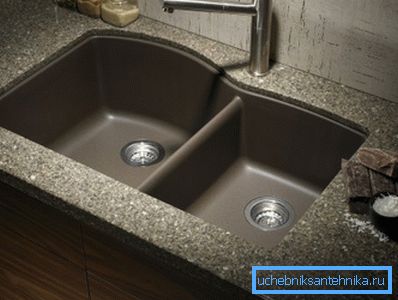
To begin with, the very name "granite" is very conditional, because in fact the shells are made of a composition that includes stone chips and polymer filler. The polymer plays the role of a binder, which firmly glues the crumb with modifiers and additives into one. The result is a monolithic material that is not inferior to natural stone, and even surpasses some indicators.
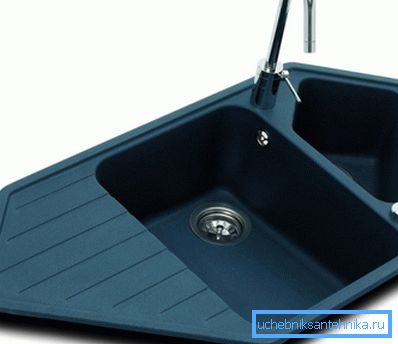
Note! As a rule, the composition of the composition of granite or marble chips takes about 80%. Unscrupulous manufacturers can reduce its content and replace the polymer, but then it turns out more "plastic" product that does not meet the standards adopted for artificial stone.
The polymer filler can be tinted in any color, which creates the possibility for the production of an assortment series with a wide range of shades and an interesting palette. Of course, the most popular colors that preserve the aesthetics of natural stone.
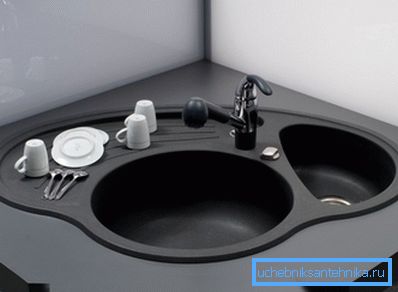
By its physical characteristics, artificial granite is not inferior to natural: it is also durable, absolutely not afraid of moisture, makes high temperatures and the effects of household chemicals. According to some indicators, the composite material is superior to natural stone - it does not have pores and does not absorb any substances, and therefore does not require special care.
It should also be noted that the wall thickness of the stone shell is about 10 mm, as a result, it sits firmly in the tabletop, and when water falls, it does not emit a noise characteristic of metal analogues.
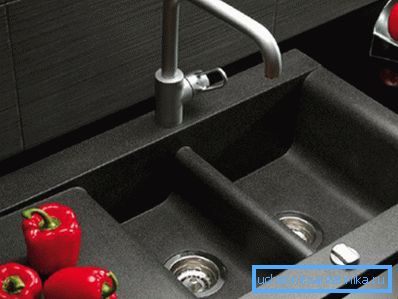
Finally, stone sinks are distinguished by their special charm and aesthetics. They fit perfectly in both classic and modern styles of interior design, can highlight the richness of kitchen furniture or add to its simplicity. The presence of such a device indicates a good taste of the owner.
Species
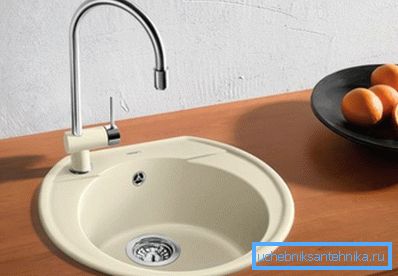
Due to the fact that for the production of used polymer composition, granite kitchen sinks are available in various shapes and sizes. The most popular classic and rounded rectangles, which may include one or more bowls.
Not less in demand are models in the shape of a rhombus, polygon or a complex oval, which combine two bowls and platforms for cutting semi-finished products and drying dishes. In general, multifunctionality is the distinctive feature of all modern plumbing, and complete with a sink are often attached all kinds of baskets, grates, drawers and other auxiliary devices.

Depending on the method of installation of the product may have structural differences.
There are three main types:
- Overhead Model. Differ in the presence of the sides, which are superimposed on the table top as a support. Installation of this type is the most simple and suitable for working with your own hands, but the presence of protruding sides slightly spoils the picture and complicates the care of the kitchen;
- Mortise models. Mounted flush with the table top. This requires a very precise fit of the hole and the milling of the cutting place in the form of a step, and the operation of such sinks is more convenient;
- Integrated under countertop. Mounting bumpers are under the dining board. In this case, fitting the hole is especially difficult and is performed on the coordinate machine, and the installation of the bowl is made by experienced specialists, hence the high price of this type.

Note! When choosing a stone sink, beware of fakes that are low in stone crumb. Give preference to recognized reliable manufacturers.
Mounting methods

As we have said, there are three ways to install sinks: invoice, mortise and sub-table. High-quality self-installation of a mortise granite sink in the countertop is possible only with the applied method.
The instruction is quite simple and includes the following steps:
- With the help of a template or in another way, contours are transferred to the board for cutting out the hole for the bowl. Bumpers should overlap the top;
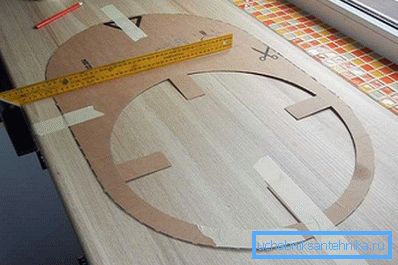
- Inside the contour, tangentially to its boundary, drill holes in the corners, insert an electric jigsaw saw into them and cut a hole;

- The cut should be treated with emery cloth and apply a thin layer of sealant;
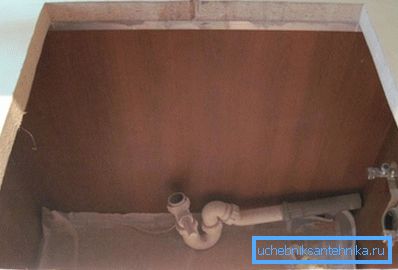
- Mount the mixer with hoses, overflow and siphon on the sink, and seal the bottom at the bottom with a special tape or silicone sealant;

- The bowl is inserted into the hole and fixed with special clips or glue. The significant weight of the product does not allow it to shift;
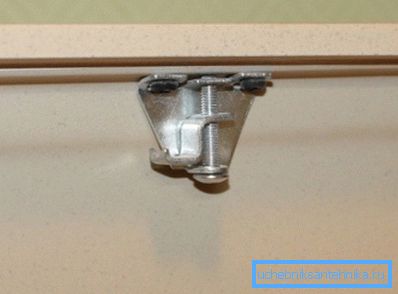
- The gaps are sealed with sealant, the siphon is connected to the sewage system, and the flexible hoses to the water supply system.

Note! Inset of the bowl flush or under-table installation requires much greater skills and abilities, and fitting the hole for them in the home is almost impossible.
Conclusion
Granite sinks made of stone on the basis of chips with a polymer composition are very high-quality products that are distinguished by high reliability, durability and unique beauty. Their operation is convenient and simple, and with the installation will help the video in this article.